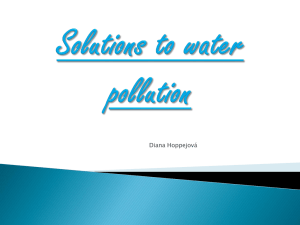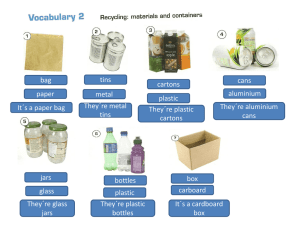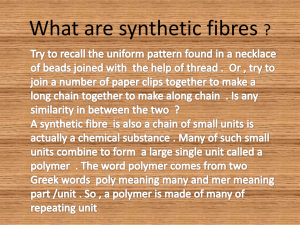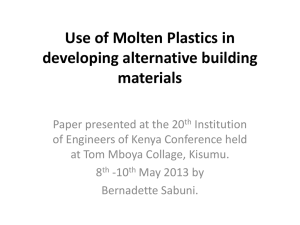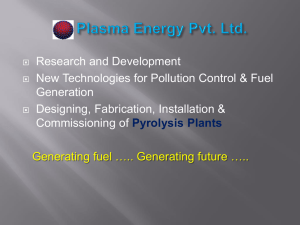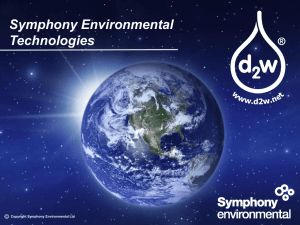Advanced Plastic Technology - Discovering the
advertisement
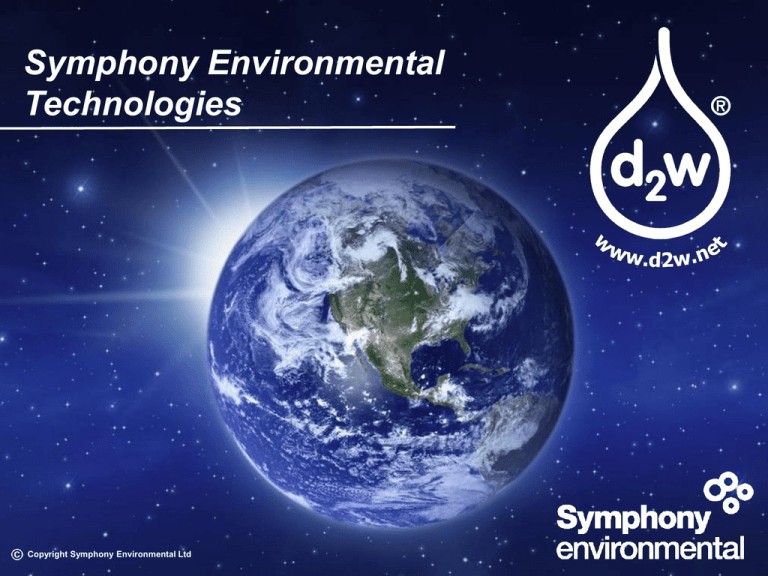
Symphony Environmental Technologies Copyright Symphony Environmental Ltd Symphony • Symphony is a British public company, listed on the London Stock Exchange • Invested $30 million in R&D • Represented in 92 countries worldwide • Chairman is a Member of the European Parliament. 2 Symphony is a Committee member of: • ASTM (American Standards) • BSI (British Standards Institute) • CEN (European Standards) • ISO (International Standards) • EUROPEN • Oxo-biodegradable Plastics Association 3 Symphony’s Technologies • d2w Controlled-life Plastic • d2p Anti-microbial plastic and anti-fungal plastic • Unique tracers in plastic products • d2Detector -Anti-counterfeiting • Advanced electronic tagging 4 WHAT IS CONTROLLED-LIFE PLASTIC FOR? 5 Plastic: Lightweight Flexible Strong/Durable Economical Heat sealable Impervious to moisture Printable Recyclable 6 BUT PLASTIC CAN LAST FOR MANY DECADES IN THE ENVIRONMENT 7 THE PROBLEM 8 9 Dr. Caroline Jackson MEP 18th July 2008 Former Chairman of European Parliament’s Environment Committee • “ we will never succeed in collecting all the waste and some may remain to disfigure the landscape. This is particularly the case with plastic waste. Where this goes uncollected it can accumulate in the environment, polluting the land and the oceans for many decades, and perhaps for hundreds of years. • However, technologies have now become available which can produce plastic products which will harmlessly degrade at the end of their useful life.” 10 The fundamental point about d2w technology is that the additive included at manufacture turns ordinary plastic at the end of its useful life in the presence of oxygen into a material with a different molecular structure. At that stage it is no longer a plastic and has become a material which is inherently biodegradable in the open environment in the same way as a leaf. 11 WELL-ESTABLISHED SCIENCE Ample peer-reviewed science. Latest is 2011 paper in “Polymer Degradation & Stability” showing 91% biodegradation in 24 months Intertek LCA 2012 puts environmental credentials of oxo-bio way ahead of conventional and bio-based plastics 12 LEGISLATION IN THE MIDDLE EAST The UAE has created its own standard for degradable plastic (UAE5009:2009), and has legislated to require all short-life plastic to be oxo-biodegradable. Extensive due-diligence WHY? 13 14 15 NOT a disposal option Nobody is suggesting that biodegradable plastics should simply be thrown away BUT – North Pacific garbage patch 16 HOW DOES IT WORK? FOUR STAGES 1. SHELF-LIFE 2. SERVICE-LIFE 3. OXIDATION PHASE - requires only oxygen 4. BIODEGRADATION PHASE See http://www.biodeg.org/files/uploaded/biodeg/Timescale_for_Degradation.pdf Stage 3 is the relevant phase for litter 17 LITTER There is no evidence that degradable plastic of any kind encourages littering 18 WHAT IS IT NOT FOR? LANDFILL • Already disposed of • Degradation deep in landfill is not desirable methane 19 COMPOSTING? • EN13432 requires 90% of the plastic to convert to CO2 gas within 180 days – contributes to climate change but does not improve the soil. • Controlled-life plastic retains the carbon for much longer, and is better for the soil – but does not emit CO2 fast enough for EN13432 • Composters don't want post-consumer plastic 20 WHAT DOES IT COST? 99% made with the same raw-materials as ordinary plastic. It does not use vegetable materials. Little or no on-cost 21 HOW SAFE IS IT? • Controlled-life plastics pass the eco-toxicity tests in EN 13432, ASTM D6954 and BS8472 to confirm that they are not toxic • They also satisfy the requirements of EN13432 to confirm the absence of heavy metals and other toxic and hazardous substances • They also conform to EU and US requirements for direct contact with food 22 HOW IS IT USED? It can be manufactured with existing machinery No change of supplier or loss of jobs Suitable for PE, PP, or PS 23 What can you do with Oxo-bio Plastic ? RECYCLING D2w Controlled-life plastic can be recycled during its service-life, with normal oilbased plastics http://www.biodeg.org/positionpapers/recycling/?domain=biodeg.org 24 IN WHICH APPLICATIONS? Rigid products such as bottles and cups Food packaging Carrier bags or “shopper-bags” which consumers use to take away their purchases from the shop Refuse sacks, which consumers buy in rolls at the shop, and use for disposal of their ordinary household waste. Aprons, for the protection of garments, in the home, hospitals, restaurants, workshops etc. Bags to contain dog faeces collected in parks, gardens, et Bin liners, Gloves, Bread bags, Frozen food bags Wrappers for cigarette packets Shrink-wrap, pallet-wrap and “Bubble-wrap” 25 D2w PLASTIC IS NOT SUITABLE FOR •Long-life applications •PVC •PET 26 Controlled-life v Bio-based • CL is intended to degrade in the open environment – BB in industrial composting • CL costs less than 5% more – BB costs up to 400% more. • CL made from by-product of oil or gas – BB from crops • BBnot really “renewable” • CL stronger and more versatile • CL retains carbon, Bio-based hydro emits to atmosphere as CO2 • CL can be recycled – BB CANNOT 27 RELEVANT STANDARDS • Controlled-life plastic can be tested according to ASTM D6954-04 – “Standard Guide for Plastics that Degrade in the Environment by a Combination of Oxidation and Biodegradation” • Also UAE Standard 5009:2009 • British Standard 8472 • Swedish Standard SPCR 141 • French Accord T51-808 N 015 28 Standards - oxo These Standards measure: Tier 1 – Degradability Tier 2 - Biodegradability Tier 3 - Eco-toxicity They are not Specifications. It is not possible to provide a specific timescale in a general standard for oxo-biodegradable plastic, (as distinct from a standard for composting) because the conditions found in industrial composting are specific and the conditions found in the open environment are variable. Also, the time taken for oxo-biodegradable plastic to commence and complete the processes of degradation and biodegradation can be deliberately varied. 29 IRRELEVANT STANDARDS (except for the eco-toxicity test) • EN 13432 • ASTM D6400 • AUSTRALIAN 4736 • ISO 14855 and 17088 These are all standards for composting requiring short timescales and rapid CO2 emissions 30 D2t Anti-counterfeiting • Unique tracer in plastic •Electronic tagging Adding Value D2p Adding Value By protecting health • Adding d2p to your product or packaging provides it with antimicrobial performance and anti-fungal performance •This means that any harmful bacteria that come into contact with your product or packaging will not be passed on through human contact •The bacteria and fungi will be killed off within a short time period •So not only is your product good for its original purpose but it also has the added value of helping to protect human health and to preserve food •This is your opportunity to be an innovator and use d2p to your advantage Adding Value THE FUTURE R&D continues – New applications. (Last year Symphony developed an additive for metallised BOPP) - New timescales - More testing New legislation New standards New environmental technologies 34
